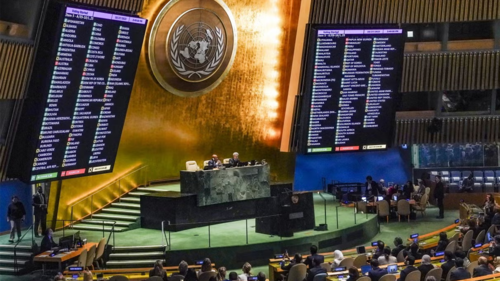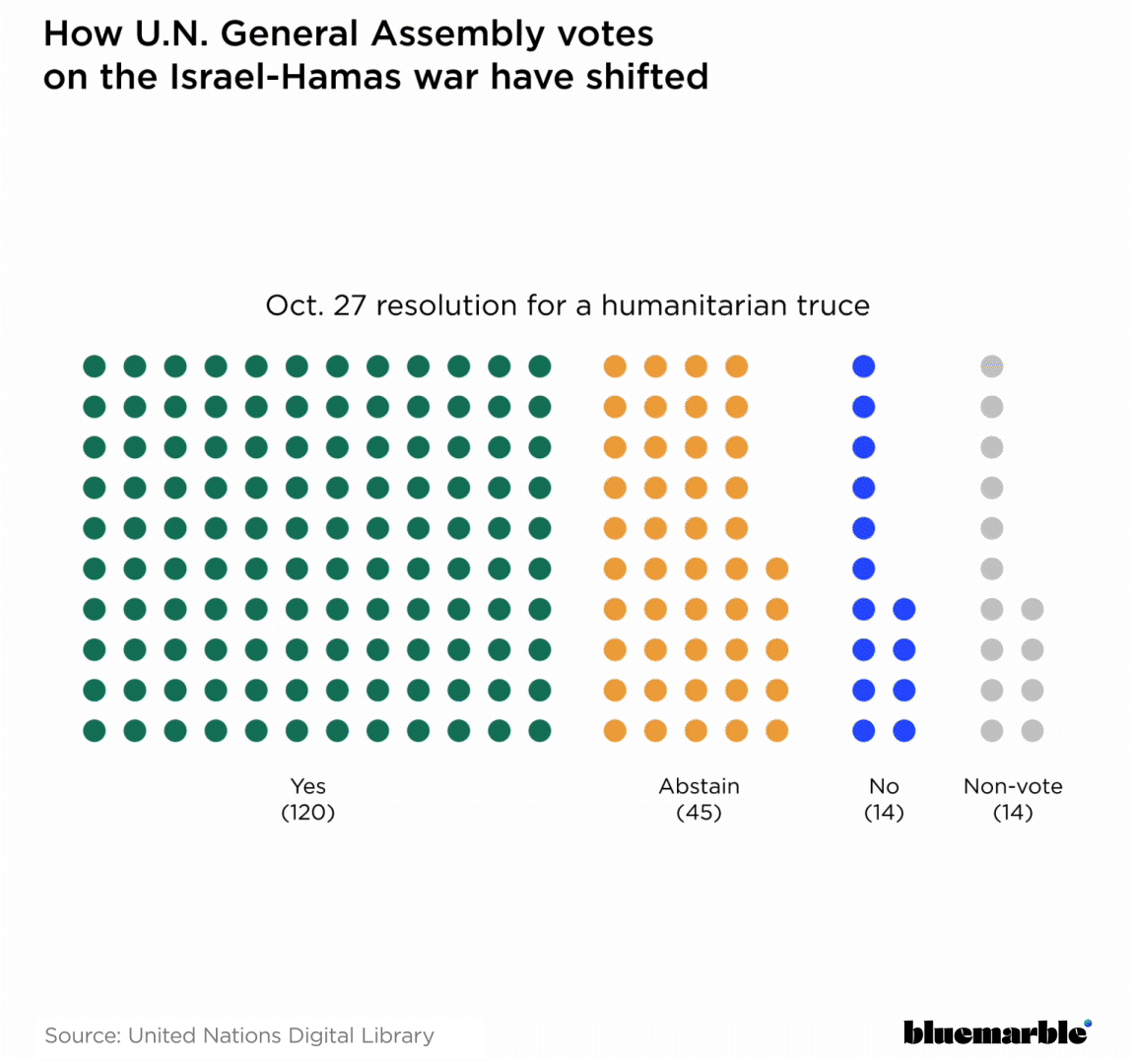Israel Loses Support at UN With Resolution for Gaza Ceasefire

UN resolutions against Israel's position and for a Gaza ceasefire have been getting more support from US allies and other countries.
In short: The United Nations General Assembly passed a resolution on Dec. 12 that called for a cease-fire in the Israel-Hamas war amid an intensifying humanitarian crisis in the Gaza Strip. The resolution was supported by an overwhelming majority of the 193-member body, receiving 153 votes, compared with 120 votes for the Oct. 27 resolution calling for a “humanitarian truce.”

The increase in affirmative votes comes from a combination of countries that had previously abstained from voting, voted no, or did not vote when the October resolution for a truce was presented.
In total, 32 countries signaled a move away from how the U.S. and Israel voted by:
- abstaining from the cease-fire vote after voting no in October (three countries)
- voting yes after abstaining in October (27 countries)
- voting yes after voting no in October (two countries)
In October, 14 U.N. members did not cast a vote on the humanitarian truce resolution, compared with just seven members who did not vote during proceedings for the December cease-fire resolution.
The two countries that voted against a humanitarian truce in October but which then voted in favor of a cease-fire were Croatia and Fiji.
In Croatia’s explanation of its vote, the country’s U.N. representative said that Croatia “stands by the right of the state of Israel to defend itself” and called for the immediate release of the hostages held by Hamas. But the representative also said that the mounting civilian casualties in Gaza, 70% of whom are women and children, makes for a “humanitarian emergency” in Gaza.
While the U.S. voted no against both resolutions, several U.S. allies changed their vote from abstention in October to yes in December, including Australia, Japan, and Canada.
“The price of defeating Hamas cannot be the continuous suffering of Palestinian civilians … The ongoing humanitarian crisis has weighed heavily in Canada’s decision to support this resolution,” Canada’s representative said when explaining its vote.
Three countries – Hungary, the Marshall Islands, and Tonga – showed a weakening in their support for Israel’s position by voting in abstention on the cease-fire resolution on Dec. 12 after voting no to the humanitarian truce in October.
During the General Assembly meeting, Hungary’s representative said it could not support the new resolution because it didn’t condemn the Oct. 7 Hamas attack, but Hungary did support two proposed amendments that specifically named Hamas.
The two amendments were proposed by Austria and the U.S. The U.S. amendment sought to add language condemning the Oct. 7 attack. The Austria amendment included language such as “held by Hamas and other groups” in reference to the hostages. According to the U.N., the passed resolution “does not condemn Hamas or make any specific reference to the extremist group.”
The U.N. General Assembly vote on the cease-fire resolution is nonbinding and followed attempts by the U.N. Security Council to pass a binding resolution, which the U.S. vetoed. As of Dec. 18, the U.S. has used its Security Council veto 45 times since 1945 to protect Israel from critical resolutions.

